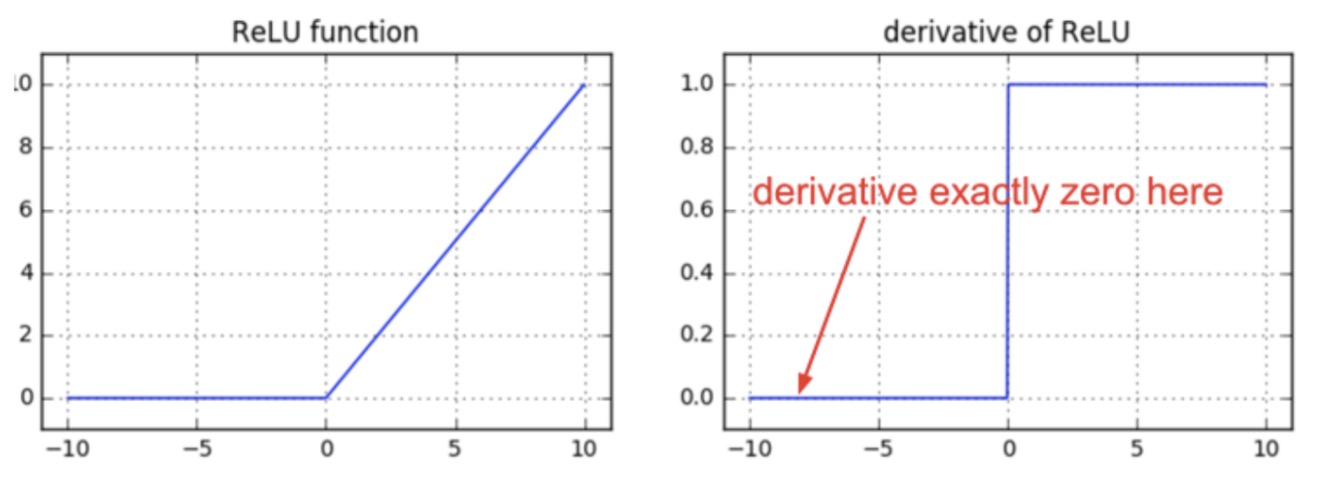Primers • Derivative of the ReLU
- Prove that the derivative of the Rectified Linear Unit (ReLU) with respect to the input \(z\) is:

- Recall that the RelU performs zero-thresholding of the input, i.e., the input cannot be lower than 0. In other words, it acts as a “gate-keeper” (or a switch) and only propagates forward non-negative inputs, while zeroing out other inputs.
- Put simply,
-
So the output of a ReLU is either \(z\) or 0, depending on whether the input is non-negative or negative respectively. Note that the ReLU is not defined at 0, so there must be a convention to set it either at 0 or 1 in this case.
-
As such, the derivative of ReLU with respect to the input \(z\) is:
- Intuitively, the derivative of the ReLU indicates that the error either fully propagates to the previous layer (owing to the 1) in case if the input to the ReLU is non-negative, or is completely stopped (owing to the 0) if the input to ReLU is negative.